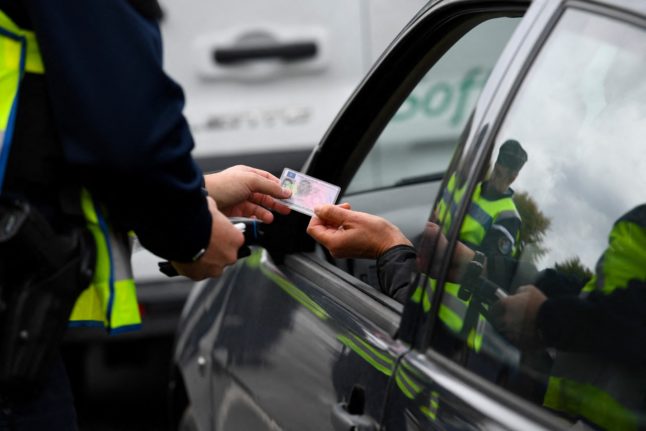Cycling has become more dangerous in France – particularly in rural parts of the country – according to a recent report on road safety.
Published on January 31st, 2023, the report, by the National Inter-ministerial Observatory of Road Safety (ONISR), compared road accidents and deaths in 2022 to those in the three previous years. It found that there has been 30 percent increase in cycling-related deaths since 2019 (the most recent pre-pandemic year) in France.
In 2022 alone, 244 cyclists were killed – a rise of 57 deaths in the past three years.
Deaths concentrated in rural areas
It is the French countryside that has been most impacted, and based on the report’s findings, it may be safer to bicycle in urban areas than in rural ones. In 2022, only one person was killed on a bicycle in Paris.
Rural parts of France saw a 47 percent increase in bicycle-related fatalities when comparing deaths in 2022 and 2019. Of those killed in these incidents, many were over the age of 55 (38 percent). Serious injuries on country roads also increased by 22 percent for cyclists.
The ONISR had already pointed to the trend of danger for cyclists on rural roads in 2021. The Observatory found that mortality for cyclists was increasing at a rate of seven percent for urban areas, in contrast to 37 percent in rural areas.
In general, road fatalities have increased in rural parts of France – of all people killed on French roads, whether they be cyclists, pedestrians, drivers, or scooter-users – 59 percent died on non-urban roads.
The President of the French Federation of Bicycle Users (FUB), Teodoro Bartuccio, told 42Mag.fr that there must be urgent action in response to the increased number of deaths and injuries involving cyclists on French roads in 2022.
Bartuccio told the French magazine that the organisation is “seeing more and more aggression from motorists, especially in the countryside where motorists seem to be the most intolerant of cyclists”. The FUB has therefore called for a road safety forum to develop plans to ensure the safety of non-motorised forms of transportation, like bicycles.
Why rural areas?
The report does not offer concrete explanations for why cycling has become more dangerous, namely in rural areas. One explanation that some have signalled to has been the fact that biking has become more common in France.
Florence Guillaume, the inter-ministerial delegate for road safety in France told Le Monde that the ‘concerning’ increase in deaths of cyclists “unfortunately goes hand in hand with the growth of environmentally friendly modes of transport”.
The report also noted that cycling in urban areas increased by 34 percent, and by 17 percent in suburban areas, in the last three years.
Rural parts of France have also seen an increase in cycling – up by 18 percent since 2019.
However, other countries have observed the opposite – as cycling increases, bicycle-related mortality decreases. In fact, the author of “The Power of the Pedal”, Olivier Razemon, told Le Monde that the presence of cyclists actually helps to slow down traffic.
“The more numerous they are, the more they lead motorists and motorcyclists to reduce speeds”, Razemon said, explaining that more bikes on the road push motorists to have to take into account the presence of bicycles and slow down.
This trend was seen in the Netherlands, where more people cycle than in France, but the number of accidents per kilometer travelled is lower than in France, according to Le Monde.
As a result, others, like Thibault Quéré, a spokesperson for the French Federation of Bicycle Users, told Le Monde that high speed limits for cars may be to blame.
Quéré told the French daily that cars run at speeds two to three times higher than bicycles, and that the départements which saw the highest increases in road deaths for cyclists in 2022 were also those who had raised their speed limits to 90 km/ hour.
“It is a completely lethal speed for cyclists”, Quéré told Le Monde, referencing the 90 km/hour rule. In comparison, speed limits in the French capital are typically kept below 30 km/ hour.
READ MORE: ANALYSIS: How much will the new 30km/h speed limit really change Paris?
The FUB spokesperson also pointed to risky behaviour on the behalf of motorists – such as driving under the influence of alcohol and drugs or speeding.
Meanwhile, some, like Mathieu Chassignet, an engineer specialised in sustainable modes of transportation, have noted the lack of bicycle infrastructure on regional and national roads.
“This is the blind spot in public policy,” Chassignet told Le Monde.
Nevertheless, the report itself did not offer any causal explanations for the rise in cycling deaths and injuries. In the Spring of 2023, the ONISR will reportedly release more details regarding the 2022 road safety report and the data used in producing it.



 Please whitelist us to continue reading.
Please whitelist us to continue reading.
Member comments